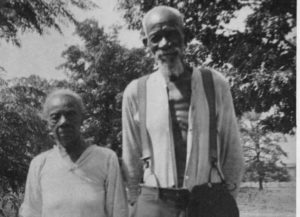Proposal to Chronicle Pandemic’s Effects Is Modeled on 1930s Federal Writers’ Project
Hundreds of bills are vying for a slot in the upcoming social infrastructure bill, but only one carries an endorsement from the Nobel Prize-winning writer John Steinbeck.
The 21st-Century Federal Writers’ Project Act, HR 3054, would chronicle the country’s recovery from the pandemic. If enacted, the Department of Labor would award grants from a pool of $60 million to hire at least 900 journalists, both experienced and emerging, to ensure a robust record of the modern plaque that has so far killed more than 654,000 Americans.
By some measures, it’s the smallest bill currently contending for adoption in the social infrastructure package. Its sponsors see manifold benefits now and in the future, just as the original Federal Writers’ Project nine decades ago launched, stabilized, and relaunched the careers of notable American writers while creating a rich record of those hard times.
The original WPA guides weren’t some unreadable bricks from the Government Printing Office. They were bestselling, well-reviewed products of a public-private partnership between WPA writers and commercial publishers like Viking.Professor David Kipen
“Many writers were laid off or had their work reduced during the COVID-19 pandemic,” said Rep. Ted Lieu (D-Calif.), who is sponsoring the bill with Rep. Teresa Leger Fernandez (D-N.M.). “Additionally, many young people have graduated into an economy that has not been able to provide opportunities to leverage their skill sets. My bill would create a new jobs program…to capture invaluable American stories that may otherwise go untold.”
Massive layoffs are expected this year and next by the Bureau of Labor Statistics. It projects a 14% decline in jobs for reporters and correspondents. Including freelancers between this year and next.
Out-of-Work Journalists
Journalist has been the fastest disappearing white-collar job in this century. “The number of newspaper newsroom employees dropped by 51% between 2008 and 2019, from about 71,000 workers to 35,000,” the Pew Research Center reported last year.
Overall, newsrooms—defined more broadly to include broadcast, magazines, and online—saw a 26% decline since 2008. More than 2,000 newspapers, most of them weeklies, have closed, others have radically reduced their newsgathering staff, and many broadcast outlets have also reduced employment.
More than 85 local newsrooms closed during the pandemic, the Poynter Institute reported last month.
Under the auspices of President Franklin Roosevelt’s Works Progress Administration (WPA), the original New Deal project put hundreds of laid-off writers and editors to work. Together with thousands of nonprofessionals, the original writer’s project created “WPA Guides” to all 48 states and 40 cities.
Oral Histories of Slavery

Significantly, that program also pioneered the field of oral history by documenting interviews with as many as 10,000 Americans from all walks of life. Among these were in-depth interviews with 2,300 elderly people who had been enslaved until the Civil War.
Zora Neale Hurston, John Cheever, and Richard Wright started or restarted their careers through the WPA writer’s project.
Perhaps not surprisingly, the bill has drawn wide support not just from House co-sponsors but from the news organizations. Editorials supporting HR 3054 have appeared everywhere from USA Today to the Nation, with additional favorable coverage both on public radio and in the New Yorker and the New York Times and the Los Angeles Times, where Lieu first spotted the idea in an article by former National Endowment for the Arts Director of Literature David Kipen. Even the Wall Street Journal has written respectfully of the bill, though Rep. Virginia Foxx (R-N.C.) opined that such matters were “best left to the private sector.”
Commercial Publishers

Reached at his home in Los Angeles, Kipen focused on how the 1930s guides were popular and widely read. “The original WPA guides weren’t some unreadable bricks from the Government Printing Office. They were bestselling, well-reviewed products of a public-private partnership between WPA writers and commercial publishers like Viking,” Kipen said.
Kipen read from a WPA guide to North Carolina to show how employing writers during the Great Depression captured historical events that otherwise may well have been lost, including a duel involving a young man who would go on to become the seventh U.S. president.
“Avery County was named for ‘Col. Waightstill Avery, who, when challenged to a duel by young Andrew Jackson, allowed Jackson to fire, and then marched up to lecture him on his hotheadedness.’” Kipen read aloud.
That, Kipen declared, is “exactly the kind of juicy anecdotal lore that gives texture and depth to historical events and could’ve been lost without the FWP. Now we need a new FWP to preserve oral histories and cultural memory at a critical time in our current, stressed history.”
Grapes of Wrath author Steinbeck was more concise. In his 1962 book Travel’s with Charley, He called the FWP’s guidebook series “the most comprehensive account of the United States ever got together, and nothing since has even approached it.”
With so many newsrooms stripped of writers, and very few allowed to do long-form reporting that can take months, much of the story about how the pandemic reshaped America may never be known. Passage of a 21st Century Federal Writers Project, as Lieu and Fernandez propose, would provide long-term benefits far above its modest cost.




